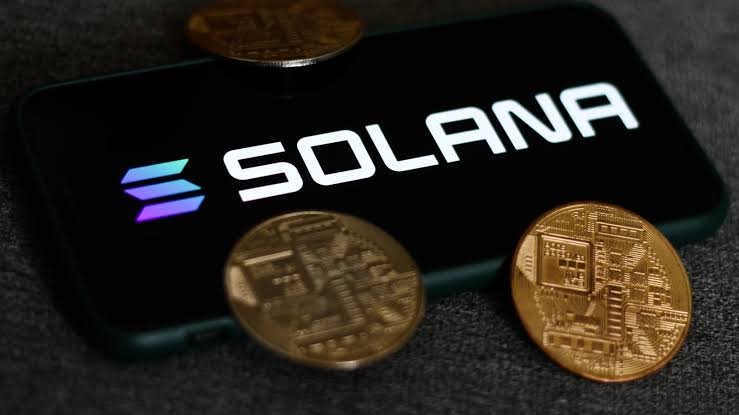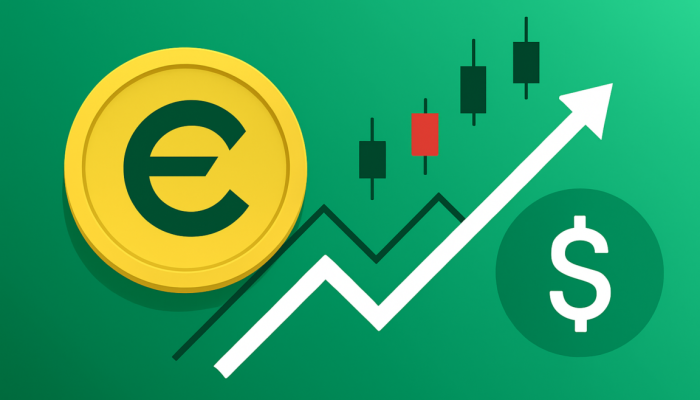Is Solana the Best Investment Choice Amidst High Transaction Failure Rates?
Introduction to Solana
Solana has swiftly emerged as a prominent player in the digital currency landscape, captivating investors with its enticing features. Notably, Solana’s architecture is designed to deliver high throughput and low transaction fees, standing out among competitors. As the broader cryptocurrency market experiences a robust bull run, Solana has garnered significant attention and interest from both individual and institutional investors seeking to capitalize on its potential.
The appeal of Solana primarily lies in its impressive scalability. Powered by a unique consensus mechanism known as Proof of History (PoH), Solana can process an exceptionally high number of transactions per second. This is a substantial advantage in an era where transaction speed and efficiency are paramount, particularly in decentralized finance (DeFi) and other blockchain applications. Investors are drawn to the platform’s ability to handle large volumes of transactions without compromising performance or incurring high costs.
Additionally, Solana’s low transaction fees are a critical factor contributing to its rise in popularity. As the decentralized ecosystem expands, the need for cost-effective and efficient transaction processing has become increasingly important. Solana’s competitive fee structure makes it an attractive alternative to traditional financial systems and other blockchain platforms with higher operational costs.
-----Cryptonews AD----->>> <<<-----Cryptonews AD-----
In the current crypto bull market, Solana has seen a surge in interest from investors seeking substantial returns. This is fueled by a combination of its technological advancements, strategic partnerships, and an ever-growing ecosystem of decentralized applications (dApps). The platform’s ability to deliver fast, reliable, and affordable transactions positions it as a compelling choice for those looking to diversify their investment portfolios.
However, as with any investment, it is essential to weigh the benefits against potential risks. While Solana’s rapid ascension holds promise, investors should remain vigilant and consider all factors, including the high transaction failure rates that have been observed, which will be explored in greater detail in subsequent sections.
The Dark Side of Solana: High Transaction Failure Rates
A critical analysis by experts on Platform X has brought to light a significant challenge faced by Solana: high transaction failure rates. This issue has surfaced notably across various platforms, shedding doubt on the reliability of the network. One striking piece of evidence comes from Jupiter, a prominent decentralized exchange operating on Solana. According to data gathered from Jupiter, a mere 35% of transactions on this platform achieve successful completion, while the remaining 65% either fail or remain unprocessed.
This high transaction failure rate on Solana offers a sobering insight into the operational vulnerabilities of the blockchain. For users, these transaction failures translate to a frustrating experience, characterized by delays and inefficiencies. The unreliability not only affects individual transactions but also poses a significant risk to building trust within the ecosystem. A blockchain’s primary allure is often its promise of swift, reliable, and low-cost transactions, yet Solana’s current pitfalls could deter potential users and businesses seeking a stable network for their operations.
Moreover, high transaction failure rates can undermine the network’s perceived benefits, such as its high throughput and low latency. Solana has been marketed as a high-performance blockchain capable of processing thousands of transactions per second. However, the discrepancy between the advertised capabilities and actual performance—evident in the data from Jupiter—raises concerns regarding the network’s scalability and robustness under load.
The persistent transaction failures not only challenge the immediate usability of Solana but also cast a shadow over its future growth potential. As blockchain technology continues to evolve, maintaining user trust through consistent performance is paramount. For Solana, addressing these transaction reliability issues is critical to fortifying its position in the competitive landscape of blockchain solutions and ensuring long-term adoption and satisfaction.
Comparative Analysis with Other Blockchain Networks
When evaluating Solana’s performance, particularly its transaction success rates, it is essential to compare it with other prominent blockchain networks such as Cardano. Solana, despite its high-speed transactions and low fees, has faced concerns regarding its stability, exemplified by its occasional high transaction failure rates. This inconsistency poses significant considerations for investors seeking reliability and performance.
In contrast, Cardano has demonstrated remarkable stability in its transactions. According to recent data, aggregators like Adamarkets, Steelswap, and Dexhunterio have shown 0 failed transactions on the Cardano network in the last 24 hours, and in some cases, even longer. This reliability can be attributed to Cardano’s robust infrastructure and the meticulous, peer-reviewed approach to its development. The high transaction success rates underscore the dependability of Cardano for those looking to invest in a reliable blockchain network.
For investors, the implications of these differences are substantial. A network’s ability to consistently execute transactions without failure is paramount, especially for high-frequency trading and critical financial activities. Solana’s higher transaction failure rates, despite its speed and cost-efficiency, can present risks that may deter cautious investors. On the other hand, Cardano’s strong track record of transaction reliability instills confidence and may attract those prioritizing stability and dependability over sheer transaction speed.
Therefore, while Solana offers advantages in terms of transaction speed and fees, its current challenges in maintaining high transaction success rates necessitate careful consideration. Investors weighing their options must consider not only the potential for high returns but also the reliability and stability of the investment vehicle, making Cardano a compelling alternative for those prioritizing secure and consistent network performance.
Conclusion: Should You Invest in Solana?
Weighing the benefits and drawbacks of investing in Solana is essential for any potential investor. On the one hand, Solana’s popularity and its scalable infrastructure make it a compelling choice. The blockchain platform has garnered significant attention due to its high throughput and low transaction costs, which have positioned it as a viable competitor to established networks like Ethereum. Additionally, the growing ecosystem of decentralized applications (dApps) and partnerships further bolster its appeal to bullish investors seeking innovative and efficient solutions in the blockchain space.
On the other hand, the bearish concerns stemming from Solana’s high transaction failure rates cannot be overlooked. These failures have raised doubts about the platform’s reliability and resilience, especially during periods of network congestion. For investors, this poses a critical risk, as consistent transaction success is paramount for maintaining trust and usability within any blockchain network. Moreover, these reliability issues could potentially stifle growth and adoption, limiting the returns on investment.
Potential investors must also consider Solana’s ability to address and mitigate these concerns promptly. The development team’s ability to implement effective solutions to reduce transaction failures will play a crucial role in maintaining the platform’s integrity and user confidence. Continuous improvements and transparent communication are vital to sustaining the bullish sentiment that surrounds Solana.
In conclusion, whether Solana is the best investment choice amidst its high transaction failure rates largely depends on the individual investor’s risk tolerance and confidence in the platform’s ongoing development. While the scalability and popularity of Solana present significant potential, the current reliability issues introduce notable risks. A balanced approach would involve closely monitoring the platform’s progress in addressing its challenges while considering diversified investment strategies to mitigate potential risks.
Read also: Ripple vs. SEC Lawsuit Fallout Sparks Surge in Crypto Airdrop Scams: Scam Alert
Is Solana the Best Investment Choice Amidst High Transaction Failure Rates?
https://bitcoinik.com/is-solana-the-best-investment-choice-amidst-high-transaction-failure-rates/feed/
https://bitcoinik.com/is-solana-the-best-investment-choice-amidst-high-transaction-failure-rates/feed/





